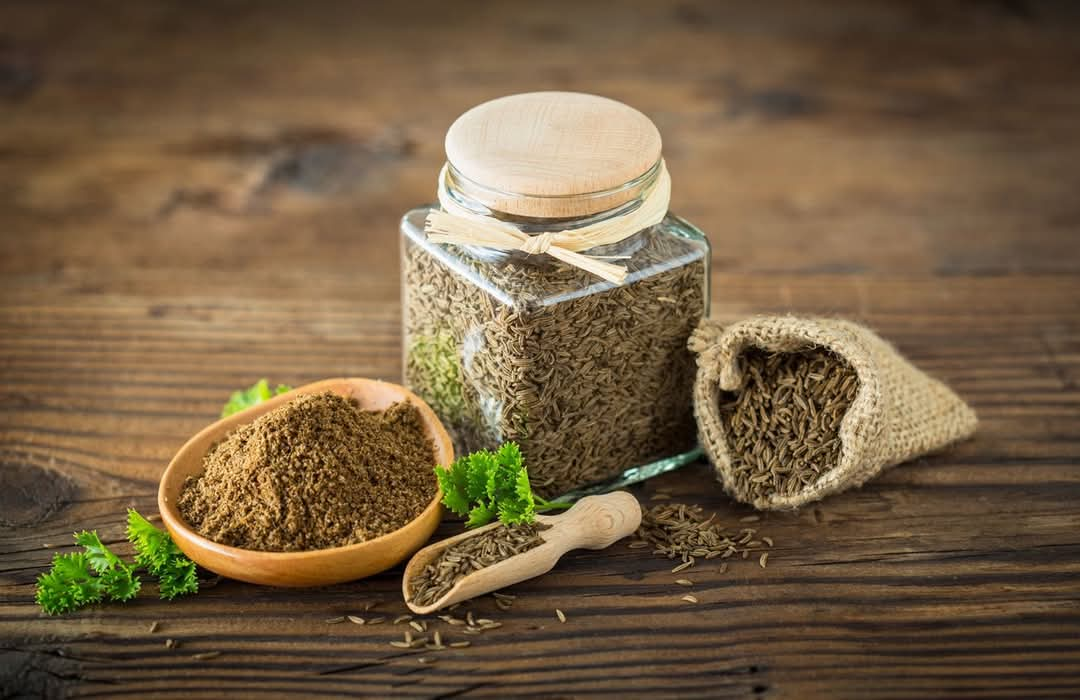Currently Empty: $0.00

May 10, 2025
0 Comments
Cumin: The Ancient Spice That Conquered the World
Cumin is not just another spice tucked away in your kitchen cabinet. It tells tales of ancient civilizations, fragrant kitchens, and enduring traditions. With its warm, earthy flavor and heady aroma, cumin has seasoned history as richly as it seasons our food — and in countries like Sri Lanka, it continues to spice up daily life and medicine alike
The Origins of Cumin
The story of cumin begins thousands of years ago in the sun-drenched regions of Central Asia, the Eastern Mediterranean, and Southwestern Asia.
Archaeologists have uncovered cumin seeds in 6,000-year-old sites such as Atlit-Yam, an ancient submerged village off Israel’s coast. From these early beginnings, cumin spread across the ancient world, cherished for both its flavor and cultural symbolism. In ancient Egypt, cumin was not only a kitchen staple but also a key element in mummification rituals.
The Name Behind the Flavor
The journey of cumin’s name mirrors its global spread. Its English name stems from Middle English comyn, Old French cummin, and Latin cuminum, which itself derives from the Ancient Greek kúminon. Even older is its Semitic root — seen in Hebrew (kammōn) and Arabic (kammūn). This linguistic trail is a reminder of cumin’s deep historical presence in global civilizations, including South Asia.
Botanical Beauty: The Plant Itself
Cumin belongs to the Apiaceae family — the same botanical group as parsley and carrots. It is an annual herb that grows up to 50 centimeters tall, producing delicate white or pink flowers arranged in umbrella-like clusters known as umbels. The seeds, small and ridged, are tucked within the plant’s tiny fruits. Once dried, they release the bold, aromatic flavor we know so well.
Culinary Stardom
Cumin’s distinctive flavor has earned it a permanent spot in kitchens from Mexico to the Middle East — and across South Asia, including Sri Lanka. In Sri Lankan cuisine, cumin (suduru in Sinhala) plays a vital role in spice blends and curries. It’s often dry-roasted to intensify its aroma, then ground into curry powders, chutneys, or herbal infusions. From lentil dhal to meat stews and sambols, cumin helps ground the island’s bold, spicy flavors.
Its presence is equally vital in global blends like garam masala, bahaarat, sofrito, and curry powders. In Morocco, cumin is served on the table like salt and pepper — a gesture of its culinary prestige.
A Fragile Crop with a Mighty Flavor
Though cumin flavors the world, it is a finicky crop. It thrives in hot, arid conditions, requiring well-drained soil and protection from frost. India — the world’s largest cumin producer — grows it primarily in the winter months, harvesting just before summer. But cumin is vulnerable to disease (like Fusarium wilt) and pests (such as aphids and mites). Still, despite its delicacy, cumin continues to flourish in nations like India, Iran, Syria, and Turkey — and finds its way into spice mixes used in Sri Lankan kitchens.
The Chemistry of Aroma
What makes cumin so aromatic? The answer lies in its essential oils: cuminaldehyde, γ-terpinene, and safranal. These compounds are responsible not only for cumin’s flavor but also for its use in perfumes, natural remedies, and even cosmetics. Toasting cumin seeds develops pyrazines — molecules that deepen its nutty, smoky signature — a scent instantly recognizable in South Asian cooking.
Traditional and Modern Uses
Cumin’s role isn’t just culinary. Across Sri Lanka and South Asia, cumin is a staple in traditional remedies. Many locals consume cumin water (known as jeera water) to improve digestion, regulate body heat, and relieve bloating. Cumin decoctions are often used in Ayurvedic practices — part of a legacy passed down through generations.
Beyond medicine, cumin essential oil is prized in skincare and aromatherapy, where its warming and spicy scent is said to energize and soothe.
Nutritional Goldmine
Cumin may be tiny, but it packs serious nutrition. Just 100 grams of cumin contains significant levels of iron, magnesium, calcium, and manganese. It’s rich in monounsaturated fats, fiber, and protein — making it a nutritional powerhouse in small doses. In Sri Lanka, as in many cultures, cumin is not just a flavor enhancer — it’s a quiet act of nourishment with every sprinkle.
From ancient altars to island kitchens, cumin has traveled a rich, flavorful path. It is more than a spice — it’s a symbol of human ingenuity, migration, and memory. In Sri Lanka, as in countless corners of the globe, cumin continues to tie generations, recipes, and cultures together. So the next time you stir cumin into a curry or sip warm cumin tea, remember: you’re tasting a history that spans continents and centuries.
#madebysrilankan #madeinsrilanka#vigtravel ❤️🇱🇰
📸 credit to photographers




